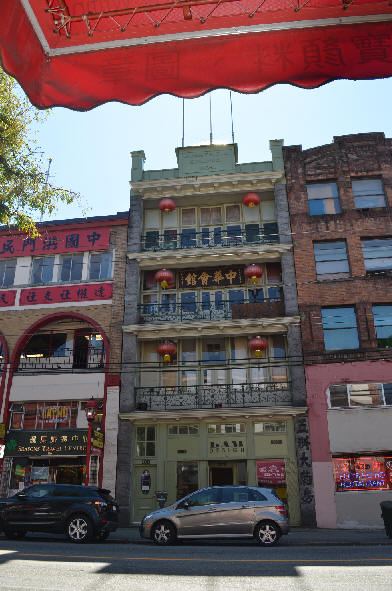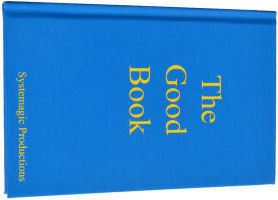Tip 1: Many visitors to Vancouver make the mistake of walking from Gastown (history) to Chinatown in order to fit both areas into one outing. A better option might be to take the Skytrain to Stadium Station and disembark into Chinatown. Here's why: The term 'Skid Row' actually partially originated in Gastown. Gastown has become gentrified, and Chinatown is nice, but the downtown east side neighbourhood in between the two remains disadvantaged. A walk between the two areas encounters homeless, the drug addicted, and the mentally ill many of whose company families and other visitors might not enjoy. The proximity of these neighbourhoods isn't surprising given the fact that Chinese immigrants were initially segregated physically, socially and culturally from Canadian society. This in-between district will likely see continued revitalization but, until then, breeze into Chinatown via the Skytrain, and descend the stairs to the north, for a pleasant cultural excursion.
Tip 2: Know what you want to see in Chinatown. Bring a list of landmarks or take a free tour from the Tour Guys. Otherwise many points of interest are likely to go undiscovered and/or unnoticed. To that end please feel free to cut, paste, and print this walking tour circuit:
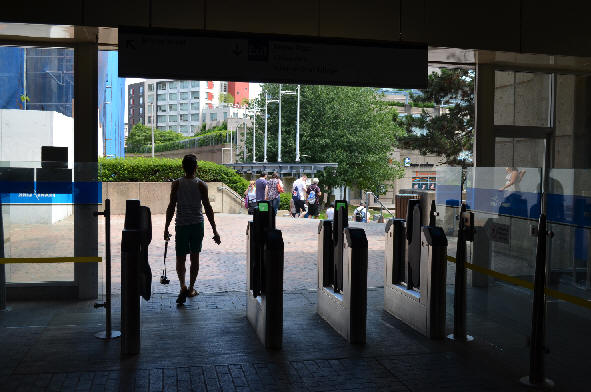
Head up the stairs from the Skytrain platform and exit on the north side of Stadium Station. This is the International Village Exit.
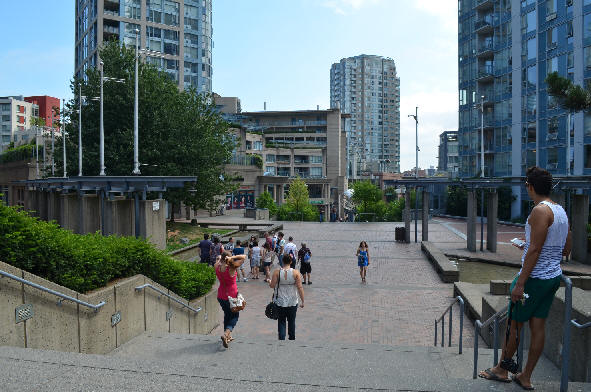
Head down all of the stairs...
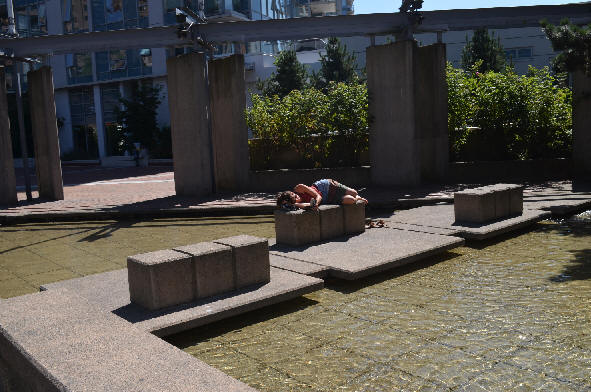
...try to ignore the pretty girl reading the book...

...and go through the Chinatown Global Plaza.
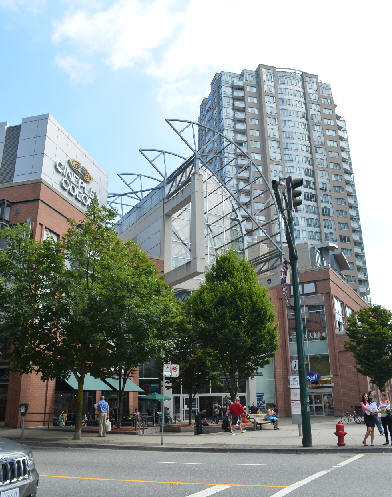
Then head through, or around, International Village Mall popularly called "Tinsletown" Mall after its movie theatres.
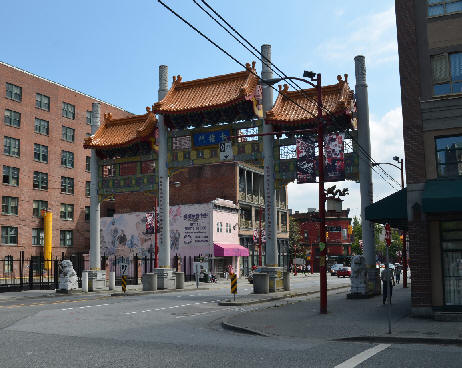
On Pender street, find the Millennium Gate, a symbol of the past and future to commemorate this "Journey in Time."
There are many landmarks here in close proximity. That's the Century's Winds of Change Mural on the side of the pink building and the historic Chinese Freemasons Building. Across the street from these buildings, not visible here yet, is Shanghai Alley.
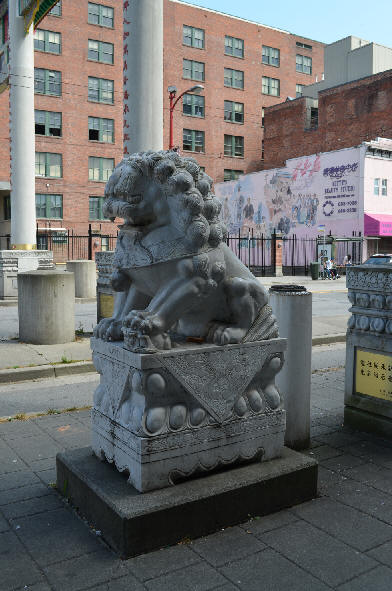
There are a pair of lions at the base of the gate. They're always found in pairs - one male and one female. The female (above) has her foot resting on a cub. The male rests his foot on a sphere symbolizing power.
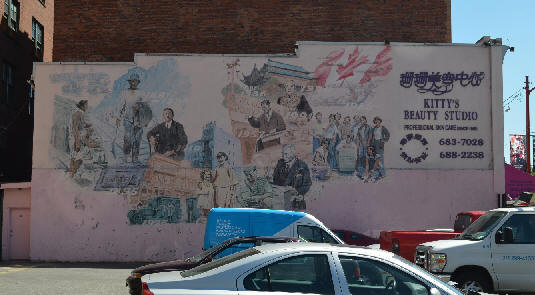
The Century's Winds of Change Mural, at 11 West Pender Street, is a historical depiction of Chinese in Canada from 1858 to the present.
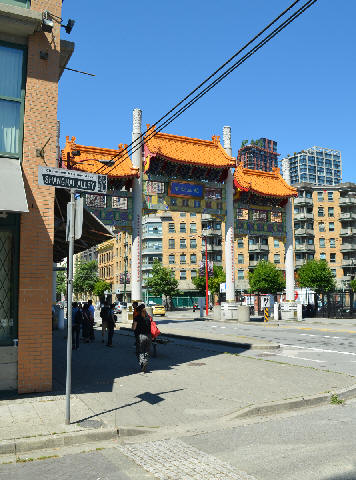
Note the close proximity of the Millenium Gate to Shanghai Alley. It also has access from Carrall street. The earliest Chinese immigrants settled in Shanghai and Canton Alleys between 1890-1920.
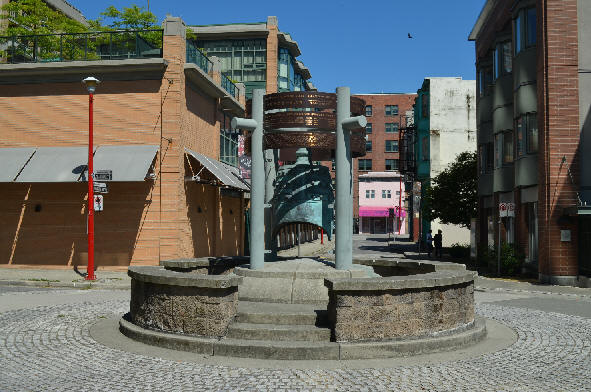
At the centre of Shanghai Alley is found the West Han Dynasty Bell. It was a gift from the City of Guangzhou to the City of Vancouver commemorating 15th anniversary of the twinning of the two cities and marks the centre of where Vancouver's Chinatown was born. Where the beige building now sits used to be the 500 seat Opera House at which Dr. Sun Yat Sen used to speak to packed houses on the subject of overthrowing the Chinese Empire.
Head back out to Pender Street, turn right, and you'll be right beside the Sam Kee Building at 8 West Pender Street.
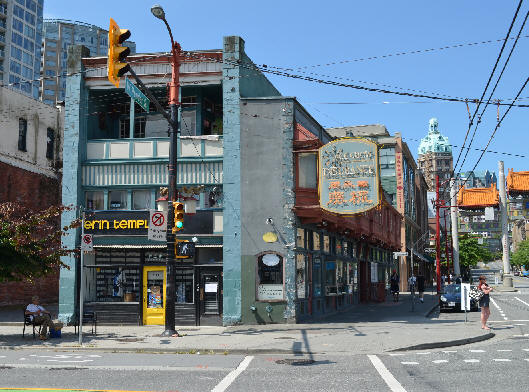
In the centre of this photo facing right, is the historic Sam Kee Building. According to both Ripley's Believe It or Not, and the Guiness Book of World Records, it's the shallowest building in the world. When Sam's large piece of property was expropriated in order to construct Pender Street only a narrow, boulevard-sized strip remained. Sam Kee demonstrated his tenacity, ingenuity and defiance by turning it into a viable, world renowned, commercial property. Note the Millenium Gate still partially visible in the background.
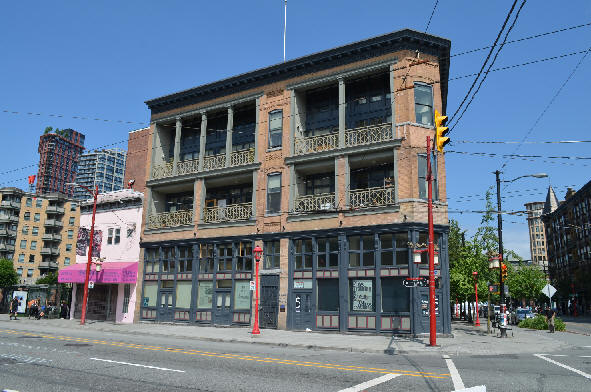
This is the historic Chinese Freemasons Building at 1 West Pender Street. Today it's the site of the last Chinese tailor shop in Vancouver's Chinatown. The recessed balconies are like those found in Southern (Cantonese) China.
Dr. Sun Yat Sen also used to deliver lectures in this Freemason's Hall. He raised $35,000 in B.C. which funded one of his attempts to overthrow the Chinese Empire. It was aborted but afterwards everyone recognized the attempt and momentum built for the eventual successful overthrow, 6 months later, in 1911. The contributions of Canadian Chinese communities are prominently inscribed in a monument in China at Huang Hua Kang.
All of the foregoing is positioned within one short block in Chinatown.
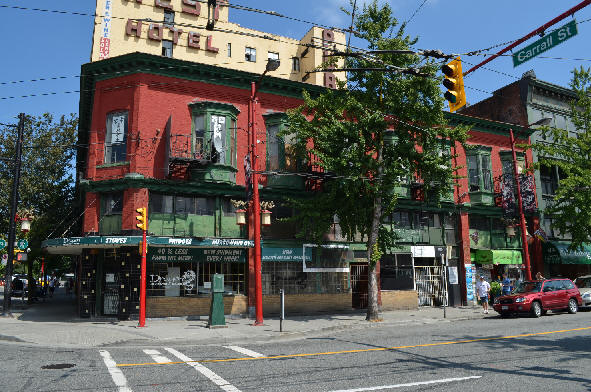
On the other side of the street, is 1 East Pender Street, the former Chinese Times building.
Constructed in 1902 it has a "cheater storey" above the first which was a way of avoiding floor space tax assessment.
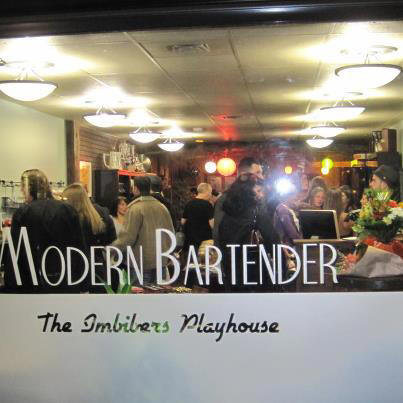
Chinatown features a mix of old and new. At 28 E. Pender you'll find the state-of-the-art Modern Bartender. The owner also runs The Shameful Tiki Room on Main Street. Not part of this tour but definitely a worthwhile destination.
This block features many historic architectural buildings. First, the buildings along the north side:
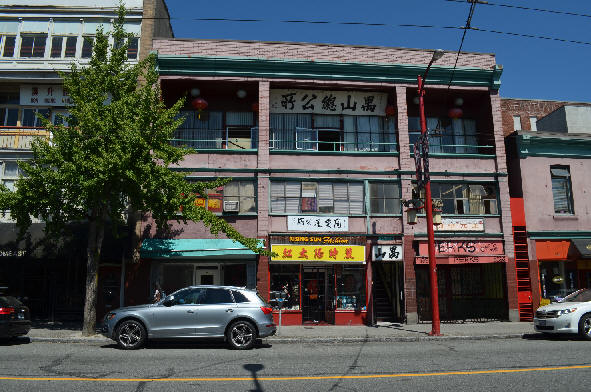
This is the Yue Shan Society Headquarters at 33-37 East Pender Street. It was built in 1920 by architect W.H. Chow who is famous for overcoming significant legal and personal challenges to become one of the few early Chinese to become an architect. Now there is a newly renovated private alleyway, beyond the red door between the buildings on the right, that leads guests into the famous Yue Shan Courtyard.
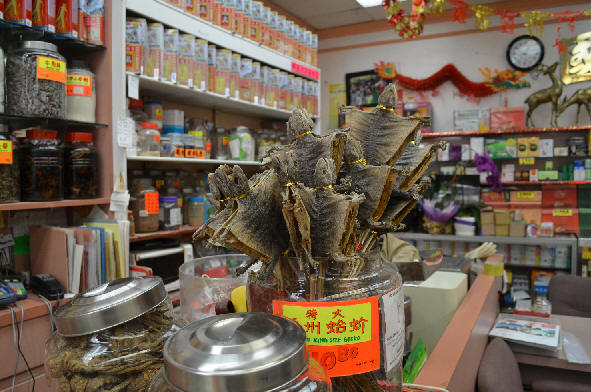
Chinatown has many retail wonders for sale at a fraction of the cost found elsewhere. For out-of-towners "Vancouver" T-shirts, for example, which sell on Robson Street for $40, can be found here for $12. Evidently the lizards-on-a-stick, seen above, are meant to be boiled as a cure for gastrointestinal disorders. They could also make interesting hand-held cooling fans.
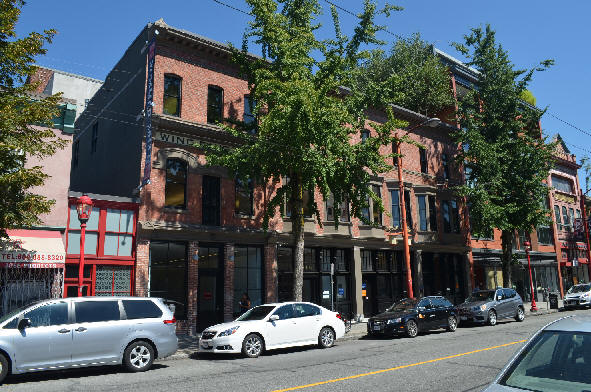
Above is the Wing Sang Company Building at 51-67 East Pender Street. The successful company was established in 1888 by Chinese merchant Yip Sang as an agency for the Canadian Pacific Steamship Line. A Vancouver heritage landmark it's the oldest building in Chinatown and now hosts private exhibition space for The Rennie Collection. The private red door seen between the buildings on the left also leads guests into the Yue Shan Courtyard.
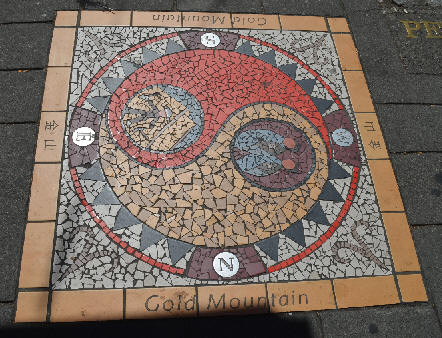
...the separation is jarring, muted gold and fiery red divided, inset circles harbour man and woman, moon and sun...
The Gold Mountain Mosaic found on Pender at Columbia. To Chinese living in China in 1860 and thereafter the name for Vancouver was Gum San, "Gold Mountain", due to the promise of prosperity that the city held for them.
This mosaic is part of the Old Vancouver Townsite/Downtown East Side walking tour.
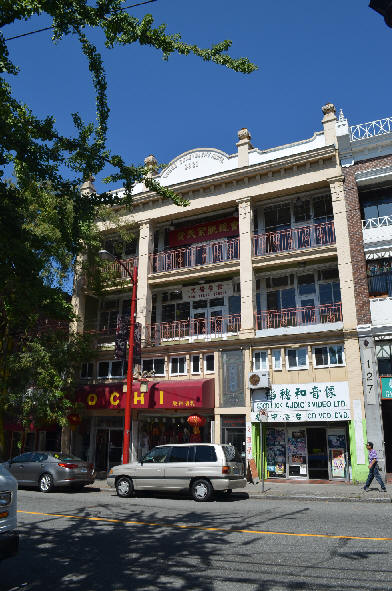
On the next block along the same side of the street is the Mon Keang School - 123 East Pender Street. This was built in 1921 by The Wong Benevolent Association as their clan headquarters. The second floor has been used as a school for Chinese Language classes since 1925.
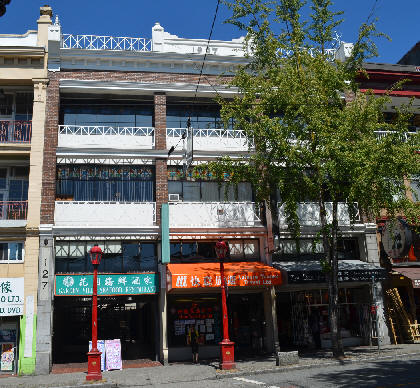
This is the Lee Building, a surname association headquarters, built in 1807 at 129-131 East Pender Street. The building was gutted by fire in 1972 but the architects preserved the original fa�ade.
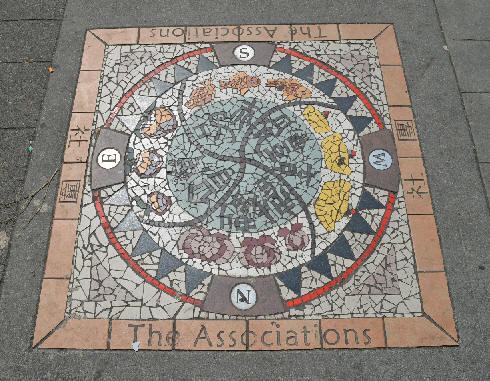
The Associations Mosaic on Pender at Carrall.
A snaking, curved symbol for abundance and prosperity separates quadrants rife with the signs of happiness and luck. An outer ring of peaches, blossoms, gold fish and gold encase the characters that represent culture and tradition...
When
newcomers from China came to
Vancouver they could find comradeship and assistance at benevolent
associations based on surname, place of origin, and
occupation. This mosaic is part of the Old Vancouver
Townsite/Downtown East Side walking tour.
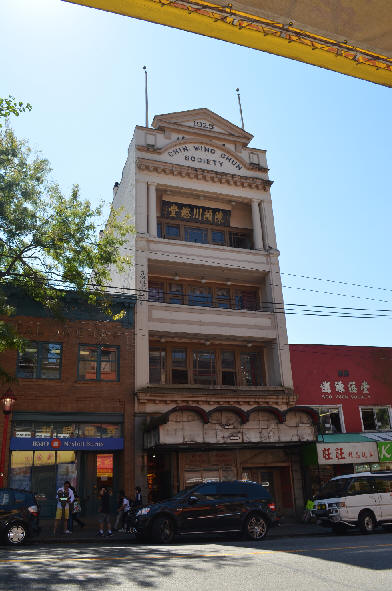
Reversing course, heading back the way we came along the other (south) side of the street, is the Chin Wing Chun Society building at 160 East Pender Street. Constructed in 1925, like the Lee building above, it was to be a surname association.
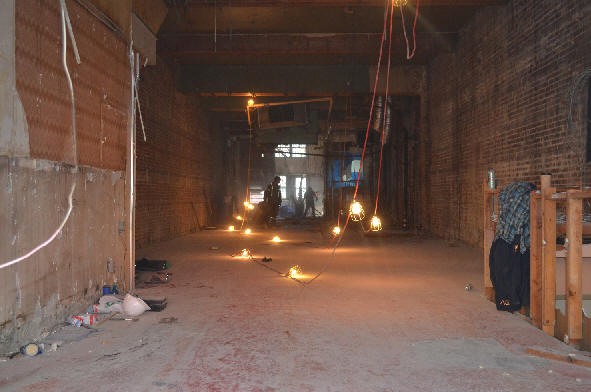
Some substantial renovations were taking place on the bottom floor of the Chin Wing Chun Society Building during August 2013.
The Chinese Benevolent Association at 108 East Pender Street was established in 1895 to unify and defend the Chinese community against anti-Asian legislation and provide welfare services for the poor.
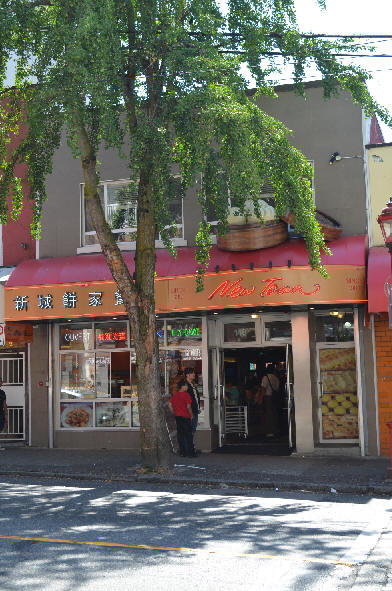
The New Town Bakery, at 148 E. Pender, is said to be one of the best places to eat.

The China Gate at 50 East Pender Street was previously, in a larger, more ornate and colourful incarnation, part of the China Pavilion at Vancouver's Expo 86. Today it's the gate to Chinese Cultural Centre of Greater Vancouver.
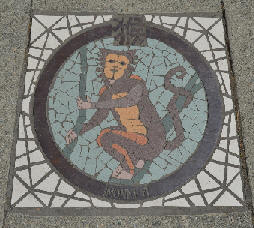
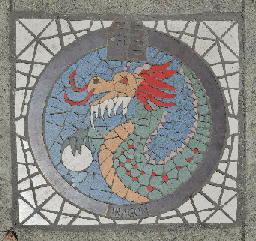
Just beyond the gate, in front of the Dr. Sun Yat-Sen Garden, is a courtyard featuring the 12 animals of the Chinese Zodiac in the Chinese Zodiac Mosaics.
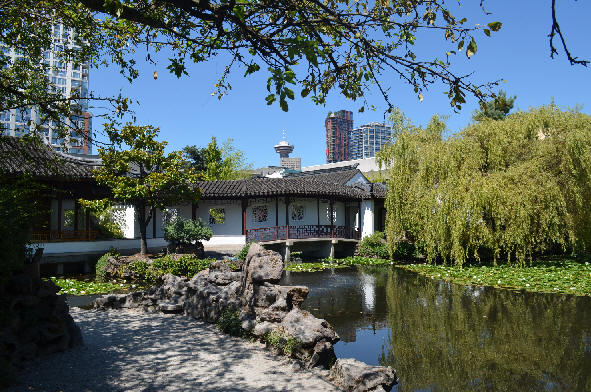
The Dr. Sun Yat-Sen Classical Chinese Garden is the first Ming Dynasty Scholars' Garden built outside of China and the golden lotus in the crown of Vancouver's Chinatown. A must-see.


If you exit the garden on the east side and you'll find yourself at...
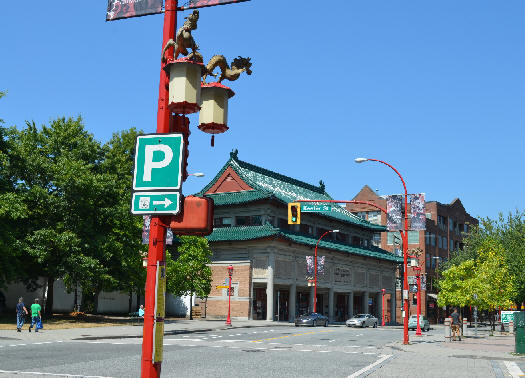
...the Chinese Cultural Centre Museum and Archives at 555 Columbia Street. They're dedicated to preserving and promoting the history of Chinese Canadians and fostering an appreciation of traditional and contemporary Chinese art. At this portal the the Gardens you'll also find...

The Bridge to China Mosaic on Keefer at Columbia indicates that the Ming dynasty gardens are a bridge to a place left far behind.
Concentric circles leading to a central image, white on mauve, the character symbol for harmony, five other figures of harmony guard the emotion...
This mosaic is part of the Old Vancouver Townsite/Downtown East Side walking tour.
Across the street in the plaza you'll see...
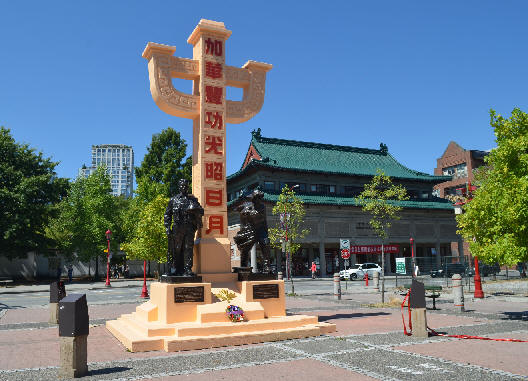
...The Monument of Canadian Chinese. It's in the shape of the Chinese character "zhong," symbolizing moderation and harmony. There are two bronze statues next to the character; a railroad worker and a Canadian Chinese WWII soldier. The Chinese Cultural Centre building is seen in the background.
Just south (left, facing the monument) of that you'll see...
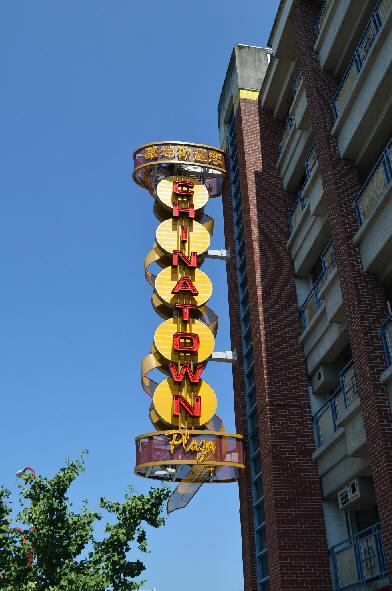
...the Chinatown Plaza Neon Sign. Measuring a majestic 45-feet tall the bilingual sign reads "Chinatown Plaza" in English and "Chinatown welcomes you" in Chinese.

The Bao Bei Chinese Brasserie, at 163 Keefer Street, features Chinese/French fusion cuisine - a Vancouver style experience.
Another Vancouver style example of cultural fusion is the January festival of Gung Haggis Fat Choy originated by Tod Wong aka "Toddish McWong".
As a matter of historic responsibility it should be duly noted that we didn't always integrate so well with our Chinese neighbours. On September 8th, 1907 the Asiatic Exclusion League, comprised of members of a working men's association concerned about the impact on job opportunities of poorly paid Chinese workers, rioted in Chinatown causing considerable property damage. A little-known consequence of this riot was that the, then federal minister of trade, William Lyon McKenzie King, years before he became the Prime Minister of Canada, came to Chinatown to inspect the damages before administering federal recompense. While inspecting the damages he witnessed the activity in opium dens and, to his horror, saw white women both working, and participating, in these iniquitous warrens. (I know... I know... Unthinkable - right?) Consequently he returned to Ottawa and drafted the first anti-drug legislation in Canada - the 1908 Drug Act.
Also, on Dominion Day (now Canada Day), July 1, 1923, the federal government passed legislation suspending Chinese immigration indefinitely. This was lifted only in 1947. To the local Chinese July 1st, during this time, was known as "Humiliation Day". What was, to the Chinese, 'Humiliation Day' for 24 years, will now be, to Canada, 'Humiliation Day' forever.
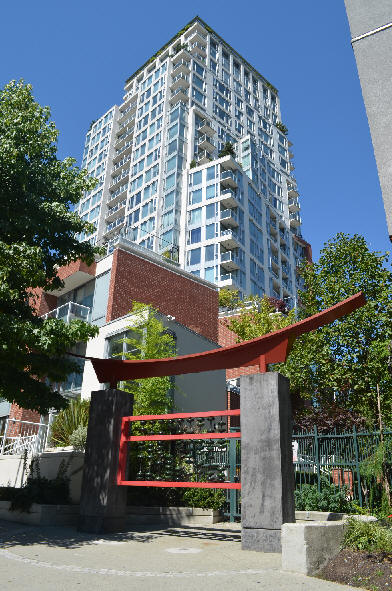
The Chinatown Abacus on Keefer Street near Taylor Street. This large abacus artwork is made with beads of British Columbia jade. Is there a significance to the number currently affixed thereupon?
Notes:
The Chinatown Night Market features traditional handicrafts, fashionable gifts & ethnic cuisine. It's open Friday, Saturday & Sunday nights from May 17 to September 8, 2013. It takes place along the 100 & 200 blocks of Keefer Street (between Gore, Main & Columbia Street).
Underground tunnels in Chinatown are rumours of legend in Vancouver. Sadly, they don't exist. There were once a few underground gambling parlours and opium dens, with doorways through basement walls - but, alas, no tunnels.
Nearby, at 796 Main Street, is the Jimi Hendrix Shrine where his grandmother used to work. The afro-Canadian neighbourhood in Vancouver was levelled to make way for the Georgia Street Viaduct. This was the first phase of a redevelopment project that, if it wasn't for public protest, would have levelled Chinatown as well. The Georgia Viaduct is now slated for redevelopment itself to make way for still more False Creek condominium developments.

